Review for Tekkonkinkreet (UK)
Introduction
Have you ever clicked on a bargain without considering if you actually need it, or want it? My shelves hate me for that tendency. My rationale in shopping can be exceedingly tenuous at times. I originally bought Paprika and Tekkonkinkreet on DVD, as they were released at the same time by Sony in the UK. When I got my Blu-ray player, it was a simple matter to upgrade Paprika. After all, I love that film, and it has extra features that aren’t available on the DVD. But getting Tekkonkinkreet on Blu-ray? It isn’t my favourite film to begin with, but when I spotted it on sale, I had to have it on Blu-ray because as I’d bought the DVDs together, there would be symmetry in me getting both of the Blu-rays as well. Retailers must love my particular brand of idiocy. Text in italics is taken from my review of the DVD.
Tekkonkinkreet is based on the manga of the same name, and tells the story of Treasure Town, a run down and outdated island community in the middle of a city, where gangs vie for control, and the area is ruled over by the Cats, a.k.a. delinquent street kids Black and White. White is a young innocent of a child, always in a dream world, while Black has always taken care of his friend, is tough and world-wise, and takes pride in guarding ‘his’ town. While White is empathic and in tune with the city, Black is strong and springs like an acrobat across the roofs of the city. But their town is under threat by some bigger guns now, as the Yakuza have set their eyes on Treasure Town, are ready to tear it down to rebuild it in their image, and have a ruthless foreign investor on their side. The devilish Snake has his own plans for Treasure Town, and won’t stop at a couple of brats who stand in his way. But Black is overly protective of White, and doesn’t realise how well they work as a team.
Picture
Tekkonkinkreet gets a splendid 2.35:1 widescreen transfer at 1080p resolution. It’s a rare aspect ratio to see anime in, but it works brilliantly here to showcase the dynamic and vibrant animation. The DVD is still one of the best anime discs I have in terms of technical quality; its image is spectacular and free of significant artefacts to begin with. It’s not one that immediately demands a double-dip. Yet the Blu-ray still manages to outshine it completely. The world of Tekkonkinkreet is a rich, detailed and lavish world, each frame is filled with complex and well thought out world design, and stylistic character designs, and the Blu-ray brings all of that across without flaw. If there is one criticism to be had of the transfer, it’s that the detail in the backgrounds is so vivid, that it now detracts from what happens in the foreground. The Blu-ray also brings across the hand-drawn feel to the animation, the way that it has been coloured to appear organic and vibrant. You really are seeing the film at its best here.
The director deliberately chose to film the animation like a live action film, and in a medium dominated by locked off static visuals, Tekkonkinreet’s cameras are practically always in motion, whether with subtle camera shake for a documentary style, or swooping camera moves over cityscapes. While the film itself is a blending of 2D and 3DCG visuals, as is the norm for modern anime, it still puts pure 3D efforts to shame in terms of vigour. The character designs are idiosyncratic, reflecting the original manga, but are also unlike what you usually expect from anime. There’s very much a European feel to the character design, a more experimental look than traditional anime. The world design is excellent, with Treasure Town a wholly realised environment that pieces together elements from all over South and East Asia. Some of the rooftops wouldn’t be amiss in the Middle East, while a lot of the iconography and imagery comes straight from Hindu mythology. The town has a feel of yesteryear, very much a community stuck in the sixties and seventies, and the bright optimistic look contrasts with the run down state of things and the bleak tone of the story.
The images in this review aren’t necessarily representative of the final retail release.
Sound
It’s an all Region disc, so it’s unsurprising to see the plethora of audio options. Alas the only HD offering is the Japanese PCM 5.1 Surround track. Everything else is in lossy Dolby Digital, albeit at 640kbps, and you can choose between DD 5.1 English, Japanese, French, German, Italian, and Spanish. Subtitles are available in English, both translated and SDH forms. There are also subtitles for 22 other languages. For this viewing of the film, I went with the uncompressed audio, and it blew me away. It’s a rich, detailed, and effective surround track that brings the film across with clarity and power. The film starts off quietly, mostly with dialogue, before segueing into the opening credits and the main theme. When the bass from the music kicks in, it’s involuntary grin time.
Extras
One advantage of the Blu-ray is that you don’t have to put up with the indignity of an anti-piracy trailer when watching the film. During playback, the film will pop-up a progress bar when you fast forward or rewind, and it tends to linger on screen for a few seconds, so if you’re skipping back to catch a missed subtitle, you’ll have to skip back a little further than you want.
A Conversation with Director Michael Arias and British Rock Duo Plaid sees the threesome interviewed for 12 minutes. This is presented with burnt in Japanese subs for the domestic audience, but you have the option for soft subs in English if you are hard of hearing. The musicians talk about scoring the film, and the rarity of getting rushes to work from, which made the experience a two-way collaborative process for musicians and director.
The Making of Tekkonkinkreet – Director Michael Arias 300 Day Diary is condensed down to 43 minutes, and offers a behind the scenes look at the making of the film, with interviews with the cast and crew. An interesting point is the nightmare caused by viewing the rough cut. Again there are hard Japanese subs for the occasional bit of English verbiage, but as most of this is in Japanese, you’ll have to make use of the optional English subtitles.
These video extras are presented in 1080i resolution, but up-scaled from SD.
The commentary for the film features director Michael Arias, screenwriter Anthony Weintraub and Sound Designer Mitch Osias. It’s pretty dry and technical at times, and goes into the making of the film once more. It’s one of those commentaries with a fair bit of dead air, more umming and ahhing from the speakers, which makes it a fairly difficult listen, but there is some useful information to be had. It’s subtitled in English, German and Dutch, should you feel the need.
Conclusion
Tekkonkinkreet is an amazing visual experience, a film that pushes the boundaries of what can be accomplished with traditional 2D animation. It conveys a strikingly inventive and colourful world with breathtaking elegance, and that coupled with the excellent soundtrack makes it a truly memorable experience. Unfortunately, what won’t be memorable is the story, which is thin and hackneyed, with nothing new to offer, along with the characters that lack development and depth, turning out to be little more than ciphers. Tekkonkinkreet is that all too familiar disappointment of style over substance,
That isn’t necessarily a bad thing, after all my anime collection would be thin indeed were I to weed out the flashy visuals in sole favour of narrative depth, but where Tekkonkinkreet falls down for me is that ever elusive emotional hook. I was initially overawed by the visuals, but when it came to the story it was something a little more than academic interest, but never the emotional investment that a story like this requires. I think an uncertain emphasis didn’t help, with some characters antagonistic at one moment, then supposedly sympathetic the next. The Yakuza characters that come in to take over Treasure Town initially appear to be villainous, then the boss turns out to be a nostalgic that’s looking back at his life and trying to reassess his priorities. His right hand man who is supposed to take care of Black and White and spread a little poison about town, turns out to be a father-to-be who looks up at his boss as a father figure, while being blackmailed by the foreign investor, Mr Snake. Snake is drawn like a stereotypical devil figure, with no redeeming qualities, so the character ambiguity stops there, but where such ambiguity may have added depth and layering to the story, here it just distracts from the central duo of Black and White.
Black and White turn out to be like Rain Man and his delinquent brother, with White the naïve and somewhat out-there childlike innocent, while Black is the ruthless boss of the streets. To make things interesting, the two have abilities that stretch to superpowers, both are surprisingly robust and agile, and White is the emotional empath, who can feel what is happening in the city, while Black is a sort of teenage Batman, bestriding the city like an avenger, taking his own painful brand of justice to anyone who would venture onto his turf. The emotional hook is here, or at least supposed to be, as Black is circling his own darkness, his penchant for violence is gradually turning him into the people he fights against, while it’s only the presence of White, who he has taken care of as far back as he can remember, which reminds him of the good in the world, and keeps him grounded. But, what should have been a constant and gradual build up in tension, a coherent character study, turns out to be sporadic and haphazard. The film occasionally tugs on the heartstrings, but then it loses its grip, and with it any poignancy.
Should you double dip on Tekkonkinkreet? At least have a better reason than I did. With this and Paprika we have two different films released by a distributor at the same time, and I find that I have watched them an equal number of times. My reactions to both are diametrically opposite. The more I watch of Paprika, the more I love it, the more I find to appreciate. Yet the more I watch Tekkonkinkreet, the more I see beneath the glossy visuals and the great soundtrack and find less of value. Its story is thin and uninvolving, its characters mere archetypes without depth. I certainly don’t regret having such a beautiful looking anime Blu-ray in my collection, but I fear that it won’t get re-watched too often from this point forward. Watch your DVD again before committing to buying this Blu-ray to ensure that you still enjoy the film. But if you’ve never seen Tekkonkinkreet before, you simply have to rent the Blu-ray once, just to be transported to a vivid, Technicolor dreamland.
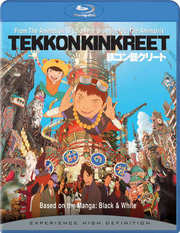





































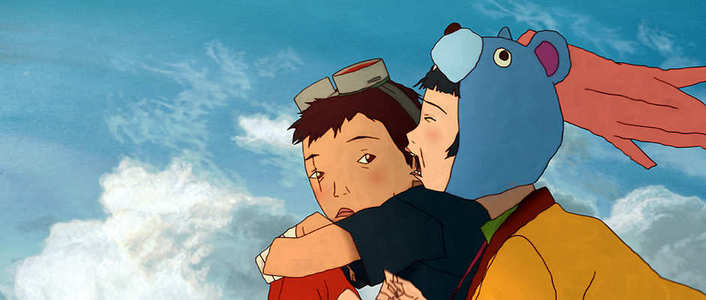
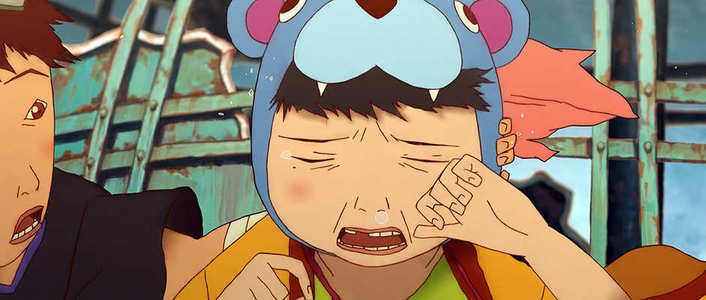

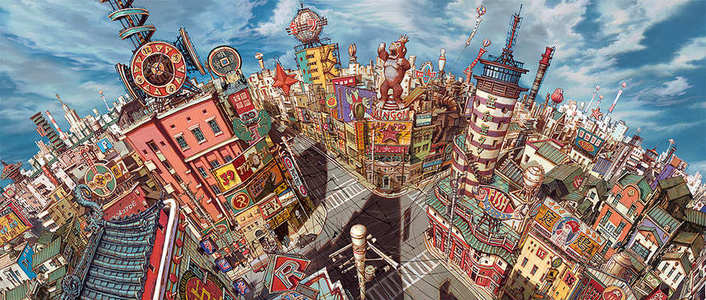
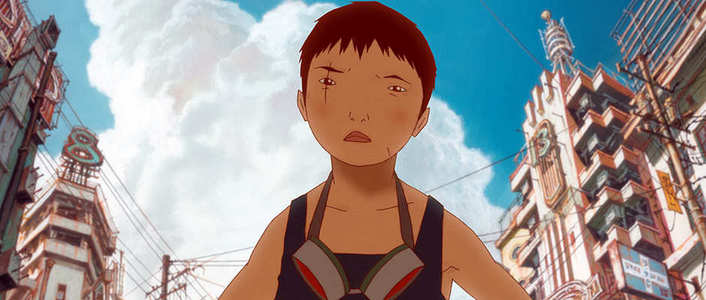
Your Opinions and Comments
Be the first to post a comment!